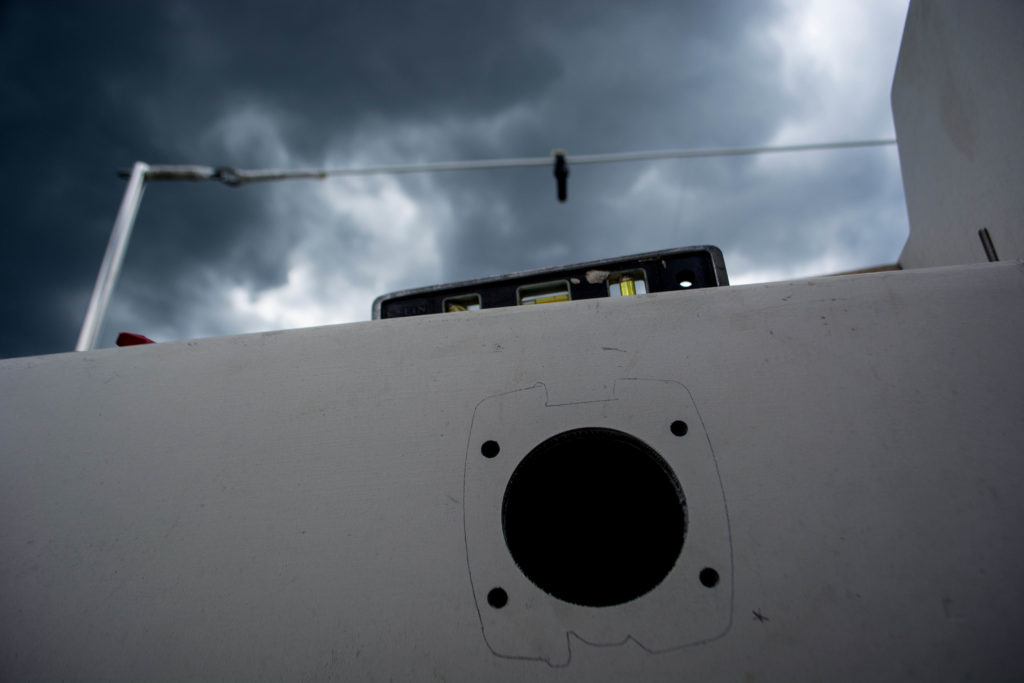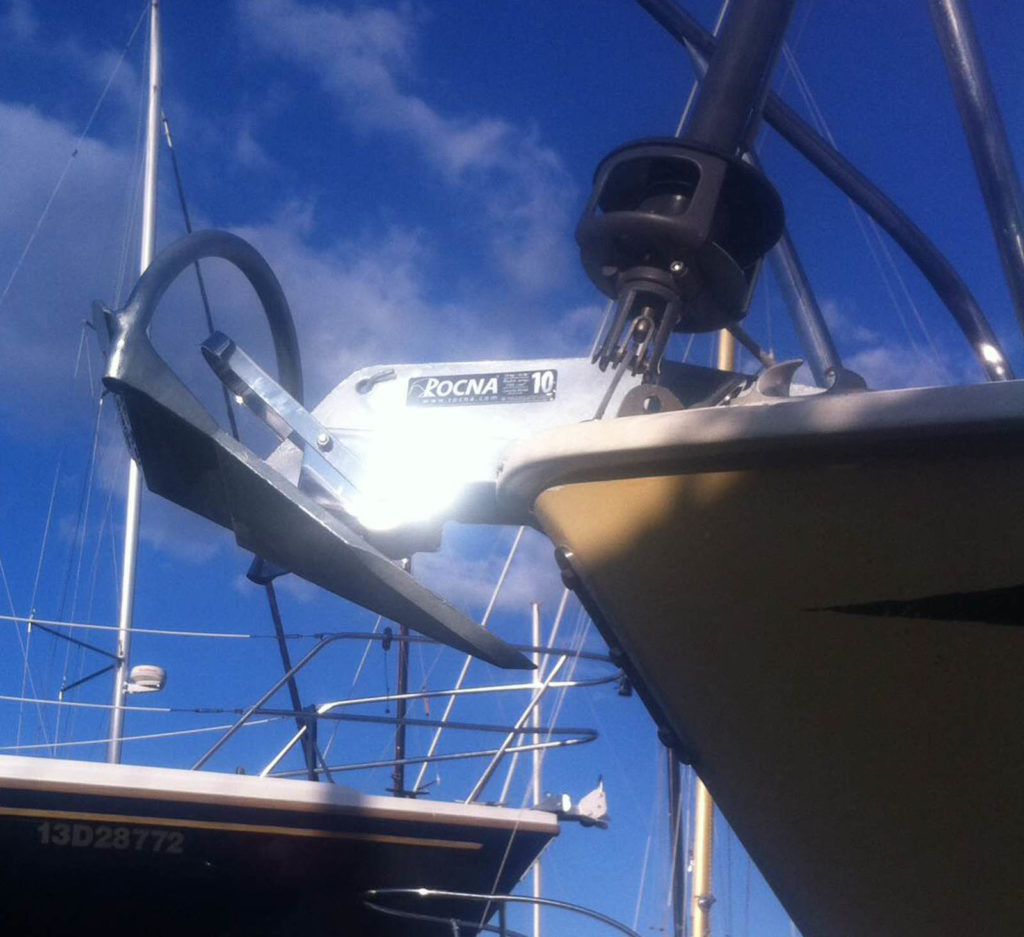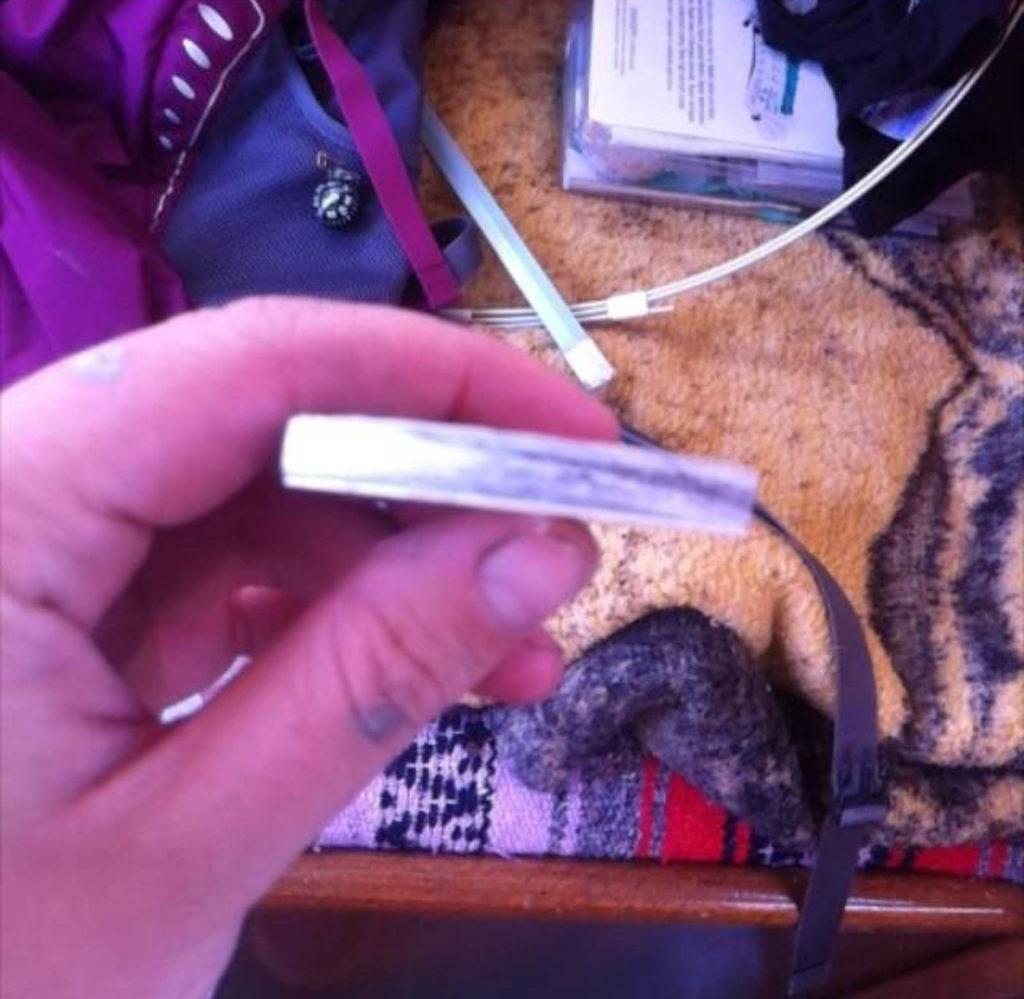The count for holes drilled in my boat now totals six. I’m not an expert, but I’ve got it down to a system. First I visualize the holes, draw a diagram that looks like a five year old did it, then I mark them. Then I have an eerie calm wash over me, and right around bed time I start to freak out and send massive amounts of text messages to boat friends in a panic, and scour the internet for information for the umpteenth time. Finally I head to the bathroom and take a nervous shit. The next day, I drill (or make someone else do it will I sweat over their shoulder).
The first three holes were through the deck for my bow roller to store my plow style Rocna anchor. I grew up on Rocna, i.e. the sailboat I spent the most time and learned to sail on had this style hook. I remember sitting in an unprotected anchorage as a gale blew over us, the wind whipping through the rigging so loudly that we shut the forward hatch for a reprieve from the harrowing howl. The anchor never budged. I’ve been a firm believer ever since.
The roller I got required three holes to mount. I drilled the holes oversized and filled them with epoxy. A lot went wrong along the way. The first time the epoxy was so thin that it dripped right through the protecting tape on the bottom of the deck. The second time, though thickened correctly, proved that my original holes weren’t measured correctly–as when I drilled through the cured epoxy my drill still picked up bits of core. At this point the best I could do was to overdose the fittings and hardware with sealant, and hope for the best. It worked out great. I call it the “epoxylypse.”
The next project was to install the manual bilge pump. This required a hole through the cockpit/bulkhead, through a piece of plywood that sections off the hanging locker, and finally through the hull (gulp). My boat has been sailed since 1976 with no bilge pump. Tight as a drum (knock on wood), but I wasn’t about to splash my boat without one. The previous owner purchased a Whale Gusher manual bilge pump but never installed it. Luckily, I’ve become friends with the right people who drove me back and forth from the hardware store to get the right hoses and fittings, and are very handy with tools. It took us two hours on two different days but we finally got it installed, and by golly it works! I hope I never have to use it for anything other than condensation or drainage from the anchor locker.
I’m a firm believer in take care of your boat and your boat will take care of you. Everyone said the boatyard is miserable, to expect misery, but I’m not so sure. This boatyard is magic. With the help of others, I’ve completed two of the three major jobs that make Anam Cara “seaworthy,” in the opinion of me and my professional marine surveyor. All I have left to do is rebed my starboard chainplate and strengthen the bulkhead it attaches to with a bit of fiberglass. Then it’s little things like brightwork, painting, and a small upgrade to her mainsail. The boat will be ready to splash soon, the only question is… will I be?





